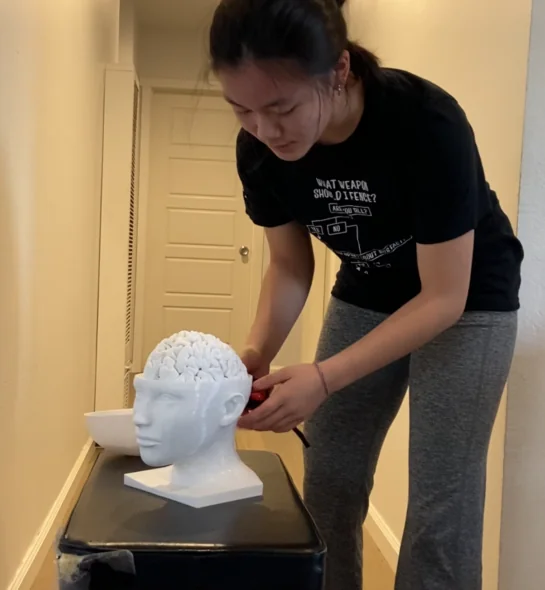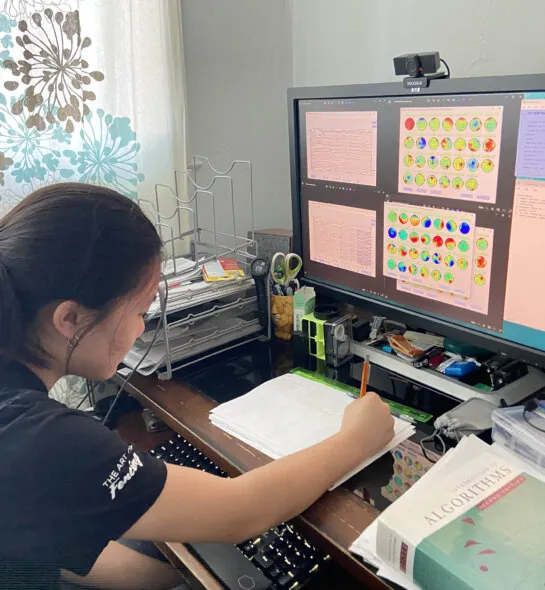Deeper Dive
When peers around me fell victim to suicide and family members passed away from sudden strokes, I asked: why haven’t we prevented these with our existing sophisticated brain imaging technology? The answer lies in the prohibitive cost, stationary nature, and diagnosis over prevention focus of current technology. What we need is an accessible, wearable, and effective brain-wellness monitoring system. I designed NeuroHAT aiming to pave the path towards democratizing brain-wellness monitoring. NeuroHAT is a two-part system: First, a miniaturized helmet to collect concurrent EEG and fNIRs data. Wearability and channel allocation were both optimized by following a Human-centered AI-driven Technology (HAT) principle. Second, EEG and fNIRs cross-informed data preprocessing for artifact removal and XGB and CNN dual detection engine.
I learned to appreciate the challenges and setbacks along my research journey. If the path has been smooth and every question has an answer, then it is likely that I’m not contributing to the subject. The challenges and many unanswered questions I encountered fueled my excitement and revealed new possibilities. For example, when multiple industry representatives told me that their cheapest single-modality devices cost ~$40K, I knew that NeuroHAT had the potential to fill the affordability gap. When the 3D printer repeatedly showed errors for my model after multiple days of printing, I spent many nights in my garage trying to figure out exactly what was happening. Challenges also helped me build patience, resilience, and critical thinking skills over time. I worked on NeuroHAT at home independently. However, I deeply appreciate my computer science teacher who constantly encourages me to go beyond in-class learning to solve real world problems. I reached out to several paper authors, called many vendors, and scheduled multiple virtual chats with industry representatives. They all answered my questions timely and supportively. Despite many technical challenges, I enjoyed collaborating with the bigger research community and aim to continue contributing to the community in college and beyond.
Not long ago, a wearable device for heart rate monitoring was in the realm of science fiction. Now, items such as smartwatches with built-in heart rate monitoring have become household gadgets. The democratization of heart rate monitoring impacted many industries, from athletic training to senior care. Currently, brain-wellness monitoring is poised at the dawn of democratization with potential for greater impact. Each year, ~$350B is spent on treatment of four high-impact brain dysfunctions: Alzheimer’s, stroke, depression, and Parkinson’s. If democratizing routine brain-wellness monitoring could reduce even 2% of this treatment cost through early detection and prevention, it would be equivalent to $7B of savings per year, not to mention many indirect financial and emotional burdens. NeuroHAT is designed to fill the gap in brain wellness monitoring with focus on detection and prevention, compared to the current focus on diagnosis and treatment.



